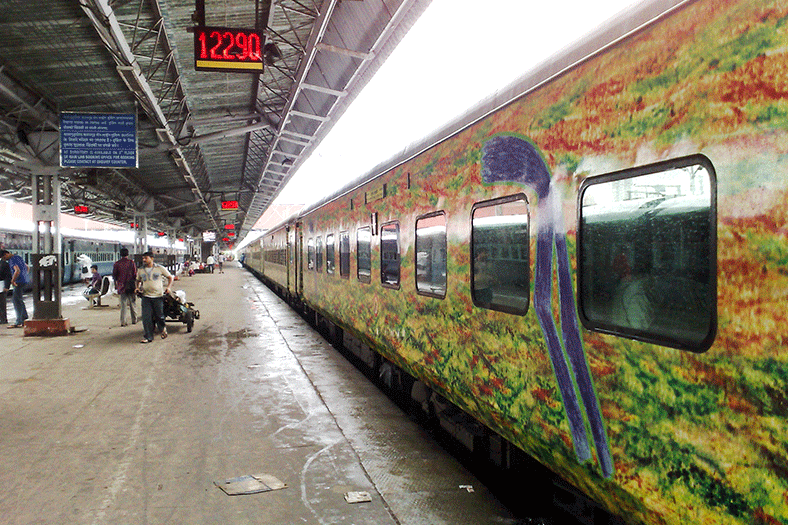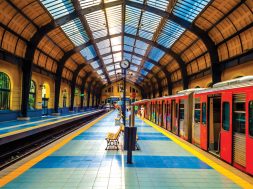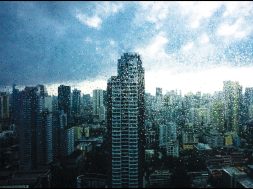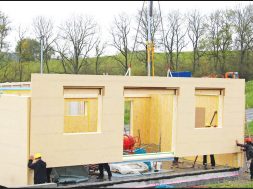Railways and Rapid Transit Systems – Enhancing lives and adding value

Transportation is one of the approaches which catalyzes the growth of successful cities, so it’s no wonder that a good deal of infrastructure spending is dedicated to the development of railways and rapid mass transit systems.
When cities grow within as also outwards leading to the creation of satellite townships, one of the major challenges which comes to the fore is transportation. Initially, vehicles and buses are put to good use. But once more and more people start heading to these townships, the idea of a cheaper and healthier transit medium gains ground. Mumbai has already witnessed this phenomena, when the city of New Mumbai was created by CIDCO in 1979, initially, CIDCO buses and private vehicles were the only mode of transport available. Later 1990 onwards train services were started in phases. Finally, when a lot of people started travelling back and fro to the city, in April 2000, the Mankhurd–Belapur–Panvel corridor was converted to double line.
Likewise within the Mumbai city too travelling was not exactly a cakewalk, the local train’s ferry lakhs of passengers each day was under immense pressure. To ease the situation the idea of developing the metro railways was rooted. Currently, Mumbai Metro One which is operational since 8th June 2014 has led to east-west rail connectivity between the Eastern and Western suburbs of Mumbai.
When it comes to railways which came much before the metros, maintaining the existing infrastructure, including the railway stations and turning them into a commercially viable option is being strongly considered. A number of railway stations are now in the redevelopment mode and work is in progress. “All of our railway development projects are still on-going. Some of the future projects we are working on are- Tirupati station, Ludhiana station, Nellore station, Dehradun station, Adarsh Nagar station, and Guntakal station” says Mitu Mathur, Director, GPM Architects and Planners. “Any railway station redevelopment project,” she adds, “has three aspects- Facilities enhancement and Augmentation which includes waiting rooms, lockers, retail stores and food & beverage kiosks, depending on the average footfall. The next aspect is traffic movement- which includes segregating arrival and departure traffic by means of city planning. It is critical to integrate the station within the city, in context with the larger master plan, similar to airport arrival and departure gates. On the local level within stations, it is critical to integrate how people get off trains and go to different arrival and departure concourse. It is of utmost important to unlock the real estate potential of such projects for the city, in order for any developer to take interest and invest. Railway station development projects sit in the heart of the city and thus have good land value to be developed. They also hold great control to stitch the city fabric into one, seamlessly integrating the two sides of the city.”
Like railways currently there are many ongoing projects as far as development of Metro is concerned not only in Mumbai but across all major metro cities. One of major construction companies involved in the construction of metro projects is L and T Construction. L and T which has successfully implemented projects in Delhi and Hyderabad is also working with the Mumbai Metro Railway Corporation (MMRC).
“Larsen & Toubro is involved in two crucial packages of the Mumbai Metro 3: UGC01 and UGC 07,” says AH Khan, Vice President & Task Force Leader, L&T Construction. “Package UGC 01 is in South Mumbai and the scope includes the construction of four stations at Cuffe Parade, Vidhan Bhavan, Churchgate and Hutatma Chowk and associated tunnels. The tunnel boring (twin tunnel) commences at the north end of the Cuffe Parade Station and terminates at the CSMT Metro Station. The Cuffe Parade Station accommodates a cross-over and stabling area. The scope also includes MEP & Architectural Works. Package UGC 07, located near the country’s second busiest airport, the scope includes the construction of three stations at Marol Naka, MIDC and SEEPZ and associated tunnels. Three TBMs (Tunnel Boring Machines) are being used in this package, launched from two locations: two from Midshaft near Pali Ground and one from ramp area near the depot. The scope also includes MEP & Architectural Works.”
The inception of Metro has bought many challenges to the fore and numerous construction technologies are being put to use to address the issue. The construction of underground tunnels has led to the use of Tunnel Boring Machines and the Drill and Blast method. Likewise, the construction of the metro station has amplified the role of precast for safer and faster construction.
“Presently, in most of the projects, the column piers and pier caps are been made in conventional cast in-situ system while the decks are made out of precast, casted elsewhere and transported to site and are launched using dedicated launching system. In addition to above, all the station buildings are made using conventional cast in-situ which often results in delay while the track corridors are made ready owing to its incorporated precast system via deck construction.” says S Sathiyaseelan, Principal Structural Manager, Teemage Precast In. The use of precast has not only catalysed the construction of metro stations, there are more benefits to be garnered. “If there is symmetry in elements, says Shridhar CN, Head – Technical & Marketing, Preca Solutions India Pvt Ltd, “precast cost will be at par with site cast costing. Even big volumes with typical elements will work out further economically. The advantages of using precast elements are that the construction is speedy, no plastering is required, and it is durable because of high grade of concrete and well compaction. And other benefits include zero curing at construction site besides which all the precast products are green and environmentally friendly.
Though the Metro Railway is an ongoing phenomena across different cities in India the joy of travelling in a Metro was first experienced by Indians as early as 1984 when Kolkata Metro came into existence. The planning for the Kolkata metro was done with the help of Soviet authorities (Lenmetroproekt) and East German engineers back in 1971. And with time, the joy of travelling in a metro is not limited to Kolkata alone. We have all come to realise the importance of the rapid transit systems and its importance in our daily lives.
29
Cookie Consent
We use cookies to personalize your experience. By continuing to visit this website you agree to our Terms & Conditions, Privacy Policy and Cookie Policy.









